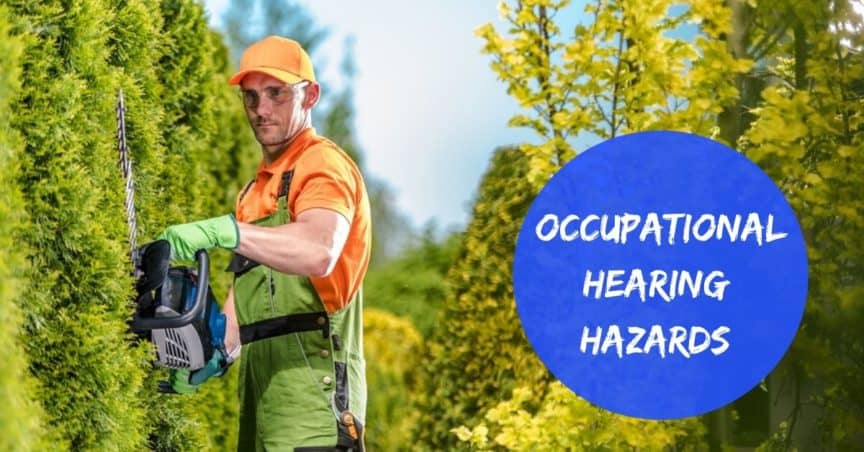- Occupational Hearing Hazards - April 27, 2020
- Understanding Noise-Induced Hearing Loss - April 18, 2020
- Understanding Noise-Induced Hearing Loss - April 12, 2020
We all want to be as safe as possible when on the job. One of the most common injuries in the workplace is hearing loss. Close to 30 million U.S. workers are exposed to dangerous levels of noise while on the job each year, according to the Occupational Safety and Health Administration (OSHA). Everyday thousands of employees are put in situations where their ears are at risk from permanent hearing loss but this does not have to be the case.
Hearing Damage at Work
Just because you can’t always tell your hearing is in danger doesn’t mean that there is not a risk. Often the daily and weekly routine of work becomes such a habit you won’t realize damage sustained at work as hearing loss develops slowly over time. There are a lot of common professions that put your ears at risk and many of them you might not even guess. More predictable professions that put your hearing at risk are factory and construction jobs. The sounds of heavy machinery rattling day after day for eight hours or more is dangerous in the proximity of the unprotected ears of employees exposed. One of the most common injuries for veterans is hearing loss with 60 percent exposed to harmful noise of gunfire and explosions, which have the potential to reach 190 decibels.
However, some less predictable professions to have to deal with hearing loss are dentists who commonly deal with the high-frequency noise of tools and drills used in the profession cause hearing damage. Another less predictable profession that puts your hearing at risk is work in food service and restaurants. The metal and concrete design of many industrial kitchens creates a potential for high decibels, while the constant buzz of conversation and loud music create an often unrealized dangerous situation for hearing health.
Be Aware of Decibel Levels
Decibels are used to measure the loudness and intensity of sound. When sounds surge beyond 85 decibels they start to put you at risk for permanent hearing loss. It can be short loud sounds reaching high decibels that can permanently damage your ears or sounds crossing the safety threshold for extended amounts of time, day after day that can also cause serious damage. For perspective, most conversations register at around 60 decibels while public events like sports or music concerts can swell to 120 decibels and higher. It is important to be aware of the decibel levels of environments, especially the ones you are constantly exposed to like your place of work. There are now apps on most Smartphones that can read the decibel level at any given time in a space, so you can know for sure when your hearing might be put at risk.
Noise Induced Hearing Loss
Noise induced hearing loss (NIHL) occurs when loud noise destroys the tiny hairs in the inner ear called cilia, which are responsible for picking up sound and sending it to our brain to be processed. As the tiny hairs become less and less, one’s hearing becomes diminished. There is no current cure to reverse hearing loss, only treatment. The most common treatment for hearing loss are hearing aids which amplify the sounds around you and deliver it to your ear to be heard using your remaining hearing.
How to Protect Your Hearing
No matter what you are doing, hearing loss could happen at any time, so it’s important to know how to protect your hearing and be aware. At work, know your environment and the decibel level so you can be prepared. It is the employer’s responsibility to have safety measures in place but only you can make sure you follow these procedures correctly so your hearing can be protected. Make sure you have earplugs or protective earmuffs with you and that you are wearing them correctly when in a harmful environment for your ears. Most hearing protection depending on its design can lower the decibel level anywhere from 15-30 decibels. Whether you are at work or pursuing your recreational activities, keep in mind the sounds you are exposed to and be prepared with hearing protection to ensure you can hear healthy for life.


